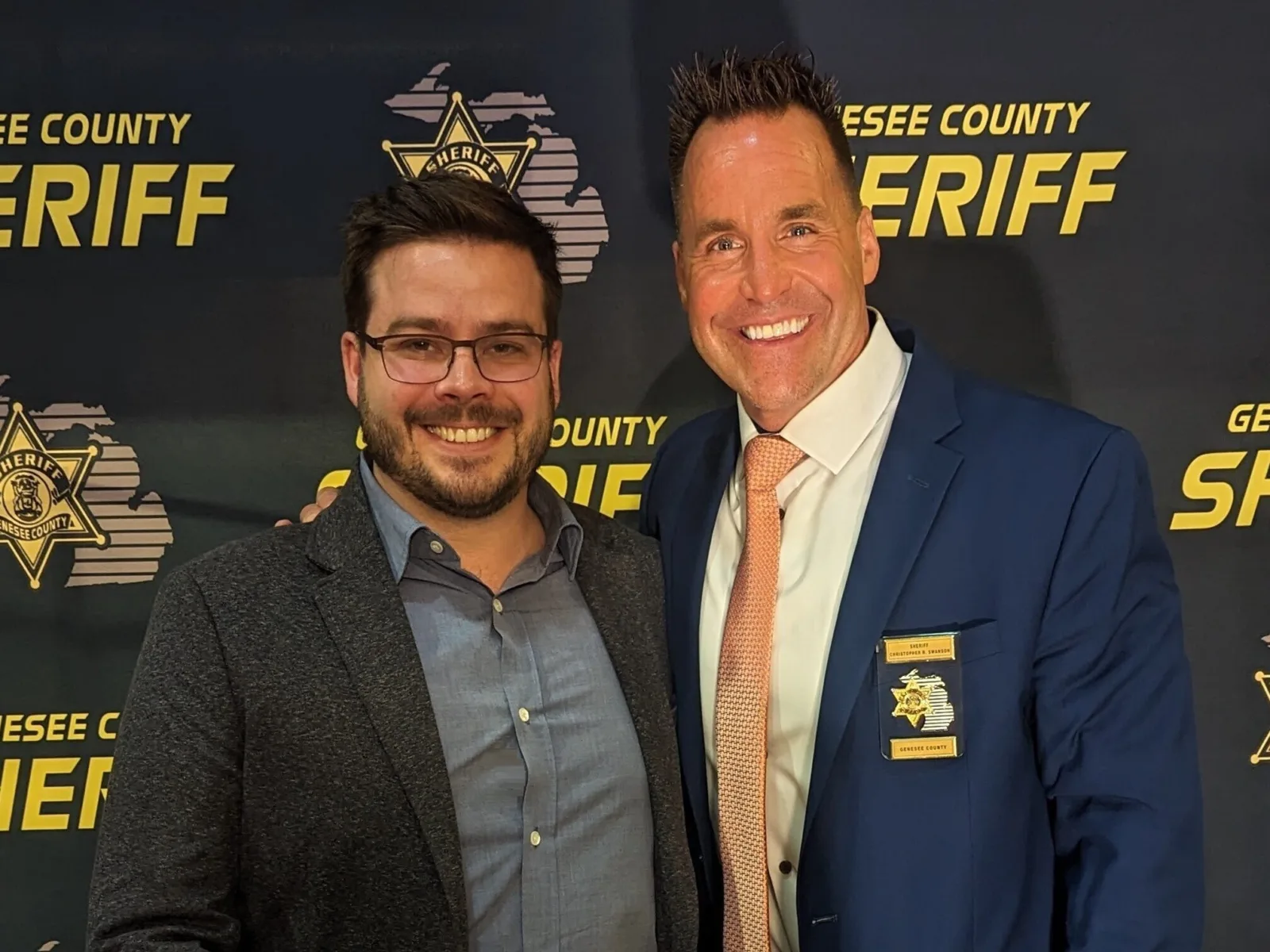Democrats and Republicans routinely work hand-in-hand in response to a crisis. Greg Jackson, executive director of the Community Justice Action Fund, made that point clear during his congressional testimony.
“When coronavirus struck our country, Congress authorized bipartisan legislation to provide resources and regulations to save lives,” Jackson, a survivor of gun violence, told the Committee on Oversight and Reform. “When Ukraine was in crisis, Congress sprang into action and mobilized bipartisan authorization to authorize immediate aid.”
Yet after mass shootings in Buffalo, Laguna Woods, and Uvalde, the partisanship seems insurmountable. However, politics isn’t the only barrier to implementing effective gun policy. Lawmakers often lack evidence and data at the scale proportionate to the challenge.
More than 110 Americans are killed with guns and more than 200 are shot and wounded each day. Over the last two decades, more school-age children have died from guns than on-duty police officers and active duty military combined. Despite this undeniable crisis, basic information, such as a state-by-state counting of nonfatal gun injuries, remains unavailable. Definitions, such as the meaning of “mass shooting,” aren’t standardized. All the while research into gun violence remains severely underfunded. According to one 2017 study, gun violence research is funded at $63 per life lost, making it second most poorly funded of the 20 leading causes of death, next to falls. In comparison, research into motor vehicle deaths received roughly $1,000 per life lost. Between 1996 and 2015, the National Institutes of Health (NIH) spent just $2 million per year on gun violence research.
“We know that the toll of gun violence in our communities is significant and unrelenting,” said Asheley Van Ness, director of criminal justice at Arnold Ventures. “The tragedies illustrate many changes that need to happen. And one of them is high quality, objective research, in order to really understand how we can get at this issue.”
‘There’s Incredible Demand Among Researchers to Make a Difference’
This gap in funding originated with the Dickey Amendment, which was imposed in 1996 to prevent the Centers for Disease Control and Prevention (CDC) from advocating or promoting gun control. That rule was treated as a prohibition on all gun violence research.
To fill in that gap, universities and philanthropy, like Arnold Ventures, have stepped up. Arnold Ventures has committed $20 million for 44 projects supported by the nonpartisan National Collaborative on Gun Violence Research, which was launched in 2018. The collaborative funds and disseminates nonpartisan, scientific research that offers the public and policymakers a factual basis for developing fair and effective gun policies.
Then in 2020, Congress resumed spending on gun violence research by specifically allocating $25 million for the CDC and National Institutes of Health. Congress re-upped that spending again in 2021.
The new funding is already having a noticeable impact on gun violence research, The Trace has reported, as academics have more freedom to engage in gun violence studies that focus specifically on firearms.
Researchers, who previously had trouble finding financial backing, are eager to finally receive much-needed aid to explore gun violence, said Andrew Morral, senior behavioral scientist at the RAND Corporation and director of the collaborative. He noted that the collaborative received 250 applications during its first two years.
“There’s incredible demand among researchers to make a difference in this area. I think if there was more funding, there would be a much richer research environment because of how many people would flood into that area and begin doing all kinds of different work,” Morral said.
Research — and Data, Too
New research continues to reveal a better understanding about the risks that guns pose and where policymakers should focus their efforts.
In one of the latest collaborative-supported projects, researchers at Stanford University found that Californians who did not own handguns but lived with people who did were more than twice as likely to die by homicide compared to individuals living in homes without guns. Importantly, they also found that people who lived with a partner who owned a handgun were seven times as likely to be killed by a spouse or intimate partner, with 84% of those victims being women. This research was only made possible because California collects good data on the topic.
Studies like that show why it’s crucial that the federal government continue to invest in gun violence research — and in data infrastructure.
Over the last two decades, more school-age children have died from guns than on-duty police officers and active duty military combined.
According to a 2021 report by the Health Management Associates (HMA) that was supported by Arnold Ventures and The Joyce Foundation, it would cost between $587 million and $639 million over five years for the federal government to research and introduce data infrastructure improvements critical to examining gun violence in the U.S. For context, federal and state governments routinely spend that much on local freeway projects.
The funding would go toward answering vital questions on issues like firearm suicide, community-based gun violence, and firearm-related technology. It would also fund investments in better data by building accessible databases and developing national data guidelines that streamline the use of vital data points. For example, while the Centers for Disease Control and Prevention’s (CDC) National Violent Death Reporting System (NVDRS) collects detailed data on firearm deaths, there is no reliable source of data on nonfatal firearm injuries.
As the body of evidence and data continues to grow, there are a few areas where robust research has identified effective gun safety policies. These are documented on RAND’s Gun Policy in America website, which states there is strong supportive evidence that child access prevention laws may decrease suicides and unintentional injuries and deaths. RAND has also found some evidence that background checks and prohibitions based on mental health may prevent violent crime. And there’s strong supporting evidence that “stand your ground” laws that authorize people to use violence if they feel they are in danger may increase violent crime.
As researchers continue to build a body of evidence, other policies may — and likely will be — added to this list of effective ways to reduce gun violence. Experts have warned that a lack of rigorous evidence today shouldn’t be a barrier to implementing common-sense policies.
“Often — usually — no such evidence is available,” Morral wrote in a Washington Post op-ed. “Even when it is, failure to find a statistically significant effect does not mean the law has no effect: It usually means the study wasn’t strong enough to say what the law’s effects might be. When no rigorous evidence of law effects is available, policymakers and the public instead must rely on logical considerations (for example, is it plausible that restrictions on magazine capacity might reduce the carnage mass shooters cause?) and weaker evidence (such as correlations).”
‘Still Asking for Action’
While the tragedies of mass shootings make headlines and demand political attention, the sad day-to-day reality of gun violence often goes unrecognized. Most gun deaths are suicides. Homicides remain concentrated among underserved, largely minority communities.
“This still remains the number one cause of death for Black men [under 45], the number two cause of death for Latino men [under 45],” CJAF’s Greg Jackson said during his congressional hearing. CJAF is a leading gun violence prevention organization specifically focused on empowering and supporting communities of color.
Jackson called on Congress to confront gun violence by supporting not only the policies aimed at firearm use, but also the community-based solutions that address the root causes of violence. These community-based solutions, such as street outreach programs that employ front-line workers to mediate conflicts, have gained recent attention and support as potential effective responses to gun violence. On its website, CJAF is beginning to roll out a hub that documents the resources available for community-based violence reduction programs.
During his testimony, Jackson highlighted these programs in a three-pronged agenda that included treating gun violence like a public health crisis, advancing legislation aimed not only at firearms themselves but also community-based solutions, and creating a select committee on gun violence to investigate the impacts of gun violence on the health and wellbeing on Black and brown communities.
“This crisis now has taken away grandparents in Buffalo, elementary kids in Uvalde, fathers in Chicago, mothers in Atlanta, nephews in Chicago, even pastors in Charleston, and we’re here still asking for action.”
Meanwhile, President Biden has issued his own call for action.
In his nationally televised speech after the Uvalde shooting, Biden specifically called on Congress to implement child access prevention laws, and stronger background checks, among other policies. Even major Republican donors are calling on lawmakers to implement policies such as extreme risk protection orders or “red flag laws,” which authorize the temporary removal of firearms from individuals determined to be at risk for committing gun violence against others or themselves, expanding background checks and raising the age to purchase a gun to 21. The New York Times has also reported that negotiations between Democratic and Republican senators have centered on red flag laws and mental health services.
Looming Barriers to Effective Gun Policy
More barriers to passing potentially effective gun policy may be on the way. The U.S. Supreme Court is considering New York State Rifle Association Inc. v. Bruen, in which the justices will decide whether New York’s strict regulation of concealed carry licenses for handguns violates the Second Amendment.
“At least 25 states have already passed laws allowing permitless carry, and there is no sign of slowing down,” Van Ness said. “Now the Supreme Court is on the verge of striking down concealed carry license rules in six states plus New York. Experts and law enforcement alike worry about what this regulatory rollback means for public safety, especially with RAND’s finding that loose concealed-carry laws may increase violent crime.”
As the field of gun violence research continues to develop, the narrowness of political opportunity to pass gun policy laws has advocates and researchers emphasizing the importance of identifying the most effective policies and ending the ignorance that makes it feel as if there’s no way to stop further tragedies.
This upcoming November, data scientists from across the country will convene at the inaugural National Research on Firearm Injury Prevention conference to focus on the state of research and identify the lifesaving policies that allow lawmakers to overcome partisan barriers and help save lives.
“If we want to start preventing this pretty enormous level of injury and loss, research is a reasonable strategy for making progress,” said Morral. “It’s a strategy we’ve used successfully in the U.S. for other causes of death and injuries that kill lots of people like car crashes, smoking, HIV prevention, and other problems that have a strong behavioral component. I see no reason why research wouldn’t be an important component to addressing our current problems with firearm violence.”





















